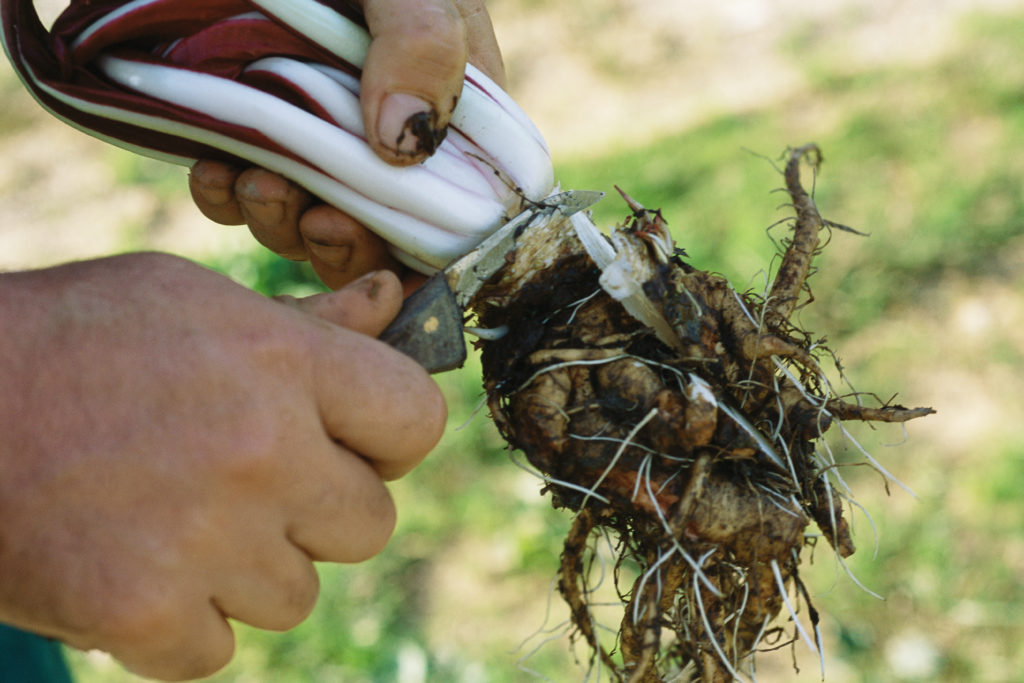
All About Chicory: Recipes to Make with the Leafy Green
Chicory, endive, radicchio: There are many names for the varying forms of this leafy green, but they all stem from the same family tree.
Chicory is a large family of plants related to daisies. While many know it as a caffeine-free alternative to coffee, it also encapsulates the leafy and bitter greens we know and love as endive, radicchio, or frisée. These lower classifications of chicories carry a similar smokey or woody flavor that is commonly associated with the coffee alternative.
But to break down what these leafy greens are, we first need to explain the difference between a leafy (and delicious) green and the root that makes for a woody, warm drink.
Chicory, or Cichorium intybus as it’s scientifically referred to, added to coffee to lower the caffeine content—or drunk instead—is made from the root that grows beneath the earth and spouts small blue flowers. The root is harvested, baked or roasted, and ground up into deep brown grounds that appear the same as coffee grounds. From there, you can make a tasty cup of brewed chicory that can curb your craving for a late-night coffee or to help wean off caffeine altogether.
Essentially, the root can be harvested from the base of radicchio, for example, while the leafy green on top can be used for cooking, adding to salads, or just eating by the handful.

Laurence Mouton/Getty Images
Within the chicory family of greens are a few different varieties. The first and most commonly found at grocery stores, farmers markets, and on menus of restaurants around south-central Europe and the United States is radicchio. The vegetable that resembles a small purple cabbage is known for its strong bitter flavor that, when combined with vinegar or sweeteners like honey or agave, brings out the mellow spice of the sturdy leaves. Radicchios can be thrown on the grill, sautéed, or—for a bitter and spicy addition to a salad—eaten raw.
Another relative of the chicory family is the Belgian endive or curly endive, which is also referred to as frisée. Endive has a crisp bitterness when enjoyed raw and makes for a great addition to salads made with a medley of different greens. Often on menus we also see curly endive as a base for meats that have been grilled or seared; this is due in part to the fact that they don’t wilt and lose flavor when warm or cooked—they actually gain a woodiness similar to the chicory root. When cooked, the bitterness fades and the woodiness steps to the forefront to offer a slight sweetness without the need for anything to be added to it.
When you see recipes refer to chicory as an ingredient, they are most often referring to the leafy green. Endive, curly endive, or radicchio can be combined and interchanged to make a great bitter green salad come fall when they are at peak seasonality.
To help you get started cooking with chicory, we’ve gathered eight recipes with various forms of preparation; from chicories served in salads, as a bed for steak, and even topped with cheese and hot honey for an appetizer you’ll come back to time and time again. Keep scrolling for our favorite recipes with chicory, and be sure to pick up a few different kinds next time you find yourself at the market.
